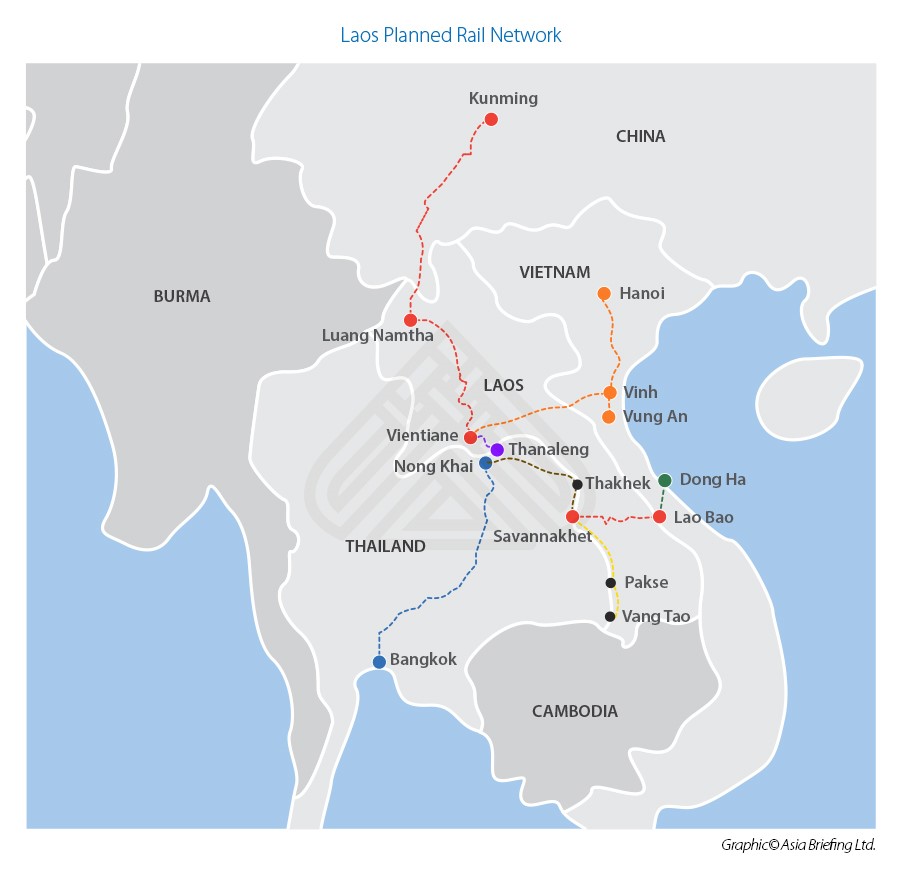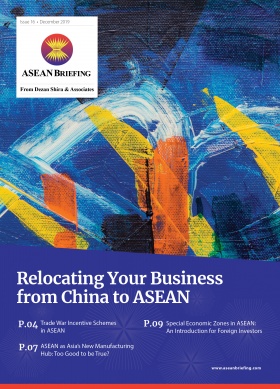Laos Planned Railways: Opening a National Rail Network in 2021
- First Laos national rail lines to open in 2021
- The China-Laos, Kunming-Vientiane link will be first
- Will change Laos from ‘land-locked’ to ‘land-linked’
- Will spur significant foreign investment into Laos
Op/Ed by Chris Devonshire-Ellis
At present, Laos doesn’t have any railways. However, that is about to change in 2021. China’s Foreign Minister Wang Yi met with his Laos counterpart Saleumxay Kommasith last week in a virtual meeting to discuss progress on the China-Laos Economic Corridor. Both Governments have occasions to celebrate this year, individually and bilaterally. China will celebrate the 100th anniversary of the founding of the Communist Party of China, while Laos celebrates the 35th anniversary of their ‘New Economic Mechanism’. That is state policy adopted in 1986, and aims for a transition of its socialist control and autarchic economy to a market economy – in other words, a socialist form of capitalism.
2021 also marks the 60th anniversary of the establishment of diplomatic relations between China and Laos and the China-Laos Friendship Year, which is being designed to accelerate cooperative projects. This has specific implications for developments in Laos and the China-Laos Economic Corridor as well as the new Laos National Railway network.
The China-Laos Economic Corridor is an important link between China’s “Belt and Road Initiative” and the Laos strategy of turning a “land-locked country” into a “land-linked country”. That includes the construction of software and hardware facilities along the China-Laos economic corridor to promote regional and bilateral connectivity of the areas along the corridor.
The Kunming-Vientiane railway
The Kunming-Vientiane railway will interconnect with a rail through to Bangkok, and head south down the Malay peninsula to Singapore. The Laos section of the project is set to be completed later this year. Construction on the China–Laos railway began in December 2016 and involves six Chinese contractors from subsidiaries of the state-owned China Railway Group. It is on schedule to be completed by December 2021 – one reason both Governments want this done to mark their respective anniversaries.
The 414 km railway line stretches from Boten, on Laos’ northern border with China, to Vientiane, the Laos capital. However difficult terrain and geography mean that a total of 170 bridges and 72 tunnels have had to be constructed through Laos’ mountainous terrain, as well as having to deal with the remnants of the Indochina (Vietnam) War which left behind an enormous volume of unexploded ordnance. Construction companies have been forced to suspend construction temporarily to clear some of the unexploded bombs, rockets, and landmines.
In Laos, the line will run through 21 stations in Laos from the border with China as follows:
Boten, Nateuy, Na Mor, Muong Xai, Ban NakhokTay, Huoi Phoulai, Luang Prabang, XiengNgeun, Ban Sen, Kasi, Ban Bua Pheouk, Pha Tang, Vang Vieng, Ban Vang Mon, Vang Khi, Hin Hoeup, Phonhong, Ban Sakha, Ban Phonh Sung, Vientiane Neua (Vientiane North) and Vientiane Tay (Vientiane Main Station). A further 12 stations are being planned for future development.
Savannakhet to Lao Bao
It’s not part of the BRI as it’s not Chinese built, however, the Savannakhet to Lao Bao railway links Thailand with Vietnam through Laos. A Malaysian company, Giant Consolidated Ltd. is working on the project, although China is also providing consultants to assist. It is a 220 km route, running mainly through paddy fields, although again there is a lot of unexploded ordnance to clear. The line runs parallel to the Route 9 highway and costs an estimated US$5 billion. Work began in 2012, and it too should open this year. The route is planned to run from the Thai border through Laos via Savannakhet, Nasay, Seno, Atsaphangthong, Phalanxay, Dongbang, Xethamouak, Vangkoung, Sepon, Ban Dong, and Densavan to Lao Bao.
Vientiane to Vung Ang
The Vientiane – Vung Ang railway (A3 rail project) would provide the capital of Laos with access to a seaport, in Vung Ang Vietnam. This 550 km railway will run via Thakhek and Mu Gia (Muya). Laos and Vietnam agreed to the construction of the railway in May 2017, and in December 2017 a feasibility study concluded that the project is feasible. The project is estimated to cost US$5 billion. Work is set to begin on the route later this year.
Thakhek to Vangtau
With a proposed railway going east from Thakhek towards Vietnam, the next phase would be to continue a railway south to Pakse. From Pakse, it would then go to Chong Mek on the Laos/Thai border. This could potentially be connected by a Thai Railway extension from Ubon Ratchathani.
Pakse – Veun Kham
Completing a north-south pan-Laotian railway would eventually be a proposed line from Pakse to Veun Kham on the Cambodian border. This would connect to a proposed line from the border to Phnom Penh. This is still under discussion.
As can be seen, Laos is set to undergo some radical changes from this year and during the coming decade. What had been a landlocked country will now have access to seaports as well as rail access through to neighboring China, Cambodia, Thailand, and Vietnam with the possibility of rail connections later through to ASEA’s regional financial and services capital of Singapore. 2021 then marks the launch of a new Laos for the future – with tourism, travel, real estate, retail, and trade all high on the agenda for foreign investment opportunities.
From Vientiane, the railway through Laos will connect with the Nong Khai–Bangkok high-speed railway in Thailand to make economic sense. That extension of the railway line between Laos and Thailand is sited at Thanaleng, 20 kilometers east of Vientiane, and crosses the border over the Mekong River.
About Us
ASEAN Briefing is produced by Dezan Shira & Associates. The firm assists foreign investors throughout Asia and maintains offices throughout ASEAN, including in Singapore, Hanoi, Ho Chi Minh City, and Da Nang in Vietnam in addition to Batam and Jakarta, in Indonesia. We also have partner firms in Malaysia, Bangladesh, the Philippines, and Thailand as well as our practices in China and India. Please contact us at asia@dezshira.com or visit our website at www.dezshira.com.








